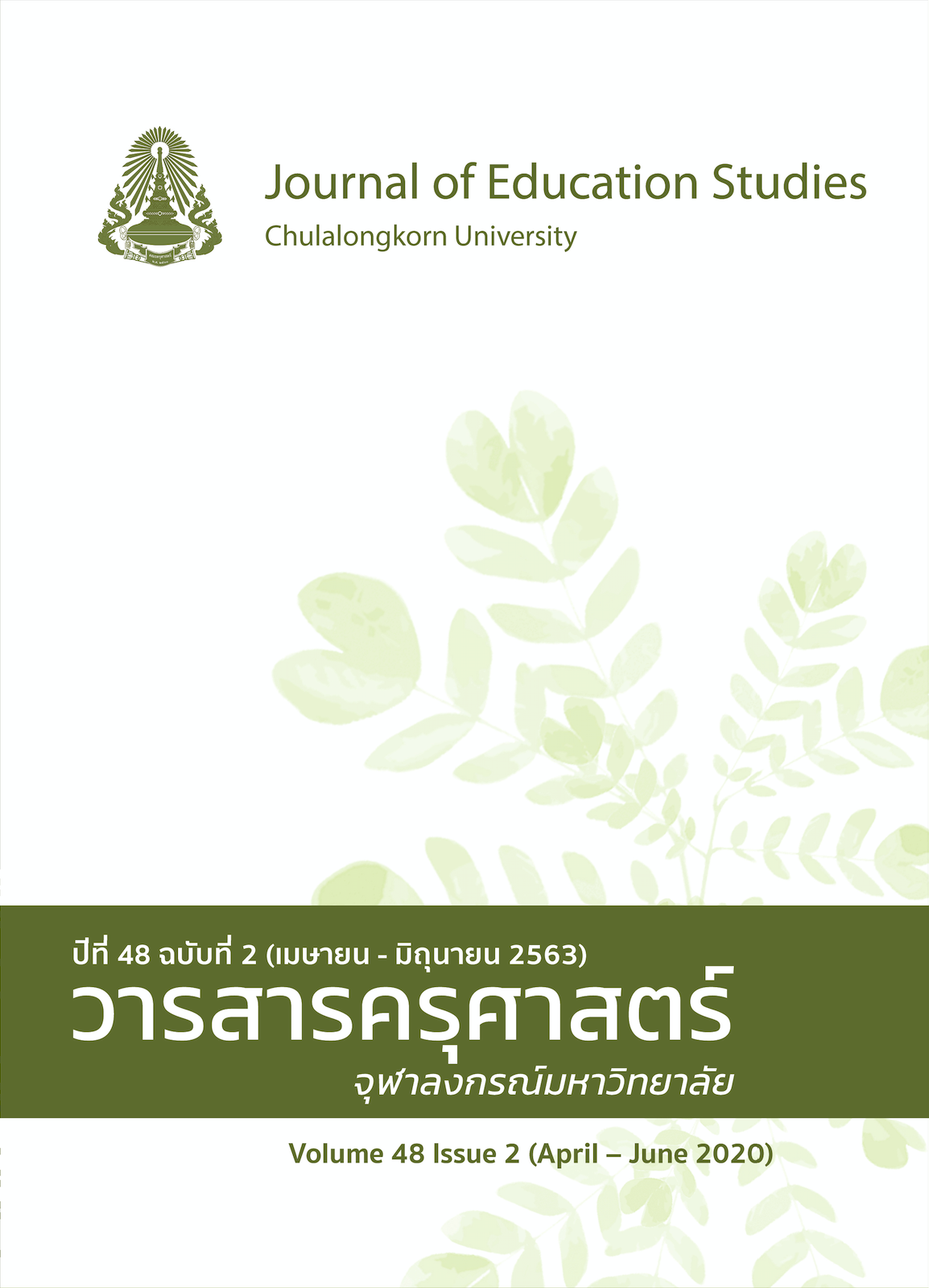Development of Three-Tiered Diagnostic Tests about Chemical Bonds for Tenth-Grade Students
Keywords:
three-tier diagnostic tests, misconception, chemical bondsAbstract
This research aimed to 1) explore misconceptions about chemical bonds among tenth-grade students, 2) improve and validate three-tier diagnostic tests about chemical bonds in terms of difficulty, discrimination, reliability and validity. The samples for the initial investigation of misconception were 120 tenth-grade students, whereas the samples for the pilot study of the three-tier diagnostic tests were 625 tenth-grade students. The research instruments were an interview form, a two-tier diagnostic test, and a three-tier diagnostic test. It was found that 1) there were 40 misconceptions about chemical bonds among the tenth-grade students. The most common misconception was that the net ionic equation is only written when the product is precipitated (25.33%). 2) Based on Classical Test Theory (CTT) and Item Response Theory (IRT) analysis, there were 80 qualified items on the three-tier diagnostic tests about chemical bonds out of 96 total items.
References
กระทรวงศึกษาธิการ. (2545). พระราชบัญญัติการศึกษาแห่งชาติ พ.ศ. 2542 และที่แก้ไขเพิ่มเติม (ฉบับที่ 2) พ.ศ. 2545. องค์การรับส่งสินค้าและพัสดุภัณฑ์.
ศิริชัย กาญจนวาสี. (2556). ทฤษฎีการทดสอบแบบดั้งเดิม. โรงพิมพ์จุฬาลงกรณ์มหาวิทยาลัย.
สมเจตน์ อุระศิลป์. (2554). การเปรียบเทียบมโนมติก่อนเรียนและหลังเรียน เรื่อง พันธะเคมี ตามโมเดลการเรียนรู้ T5 แบบกระดาษ. วารสารวิจัย มข, 1(1), 38-57.
ภาษาอังกฤษ
Adadan, E., & Savasci, F. (2012). An analysis of 16–17-year-old students’ understanding of solution chemistry concepts using a two-tier diagnostic instrument.
International Journal of Science Education, 34(4), 513-544.
Al-Balushi, S. M. (2012). Omani twelfth grade students’ most common misconceptions in chemistry. Science Education International, 23(3), 221-240.
Arslan, H. O., Cigdemoglu, C., & Moseley, C. (2012). A three-tier diagnostic test to assess pre-service teachers’ misconceptions about global warming, greenhouse effect, ozone layer depletion, and acid rain. International Journal of Science Education, 34(11), 1667-1686.
Bayrak, B. K. (2013). Using two-tier test to Identify primary students’ conceptual understanding and alternative conceptions in acid base. Mevlana International Journal of Education, 3(2), 19-26.
Bloom, B. S. (1971). Handbook on formative and summative evaluation of student learning. McGraw-Hill.
Caleon, I., & Subramaniam, R. (2010). Development and application of a three‐tier diagnostic test to assess secondary students’ understanding of waves. International Journal of Science Education, 32, 939-961.
Cetin-Dindar, A., & Gebanc, O. (2010). Development of a three-tier test to assess high school students’ understanding of acids and bases. Procedia Social and Behavioral Sciences, 15, 600–604.
Dogan, D., & Demirci, B. (2011). High school chemistry students’ and prospectivechemistry teachers’ misconceptions about ionic bonding. Inonu University Journal of the Faculty of Education, 12(1), 67-84.
Ozmen, H. (2010). Determination of science student teachers’ conceptions about ionization energy. Procedia Social and Behavioral Sciences, 9, 1025–1029.
Pesman, H., & Eryilmaz, A. (2010). Development of a three-tier test to assess misconceptions about simple electric circuits. The Journal of Educational Research, 103, 208–222.
Treagust, D. F. (1988). The development and use of diagnostic instruments to evaluate students’ misconceptions in science. International Journal of Science Education, 10, 159–169.




